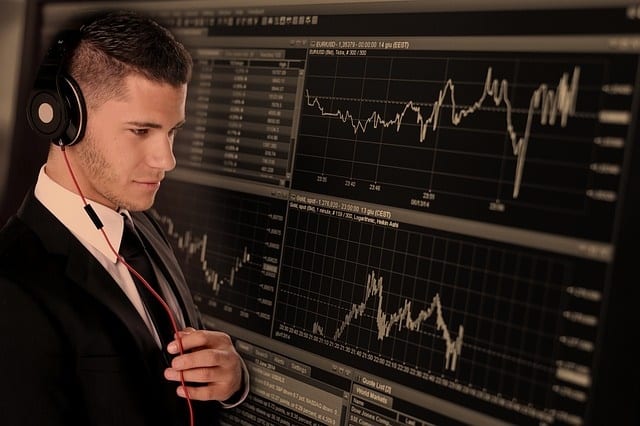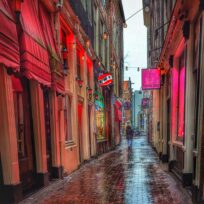As a retail store owner, you may be your own boss, but that perk does not come without its responsibilities.
From overseeing day to day restocking, purchasing, accounting and other management tasks, to making major decisions in hopes that they will benefit your store and its employees, the list and magnitude of your accountability just keeps on growing with the scale of your business.
One such responsibility comes in the form of ensuring that said growth does not roll back at any point, but only lets you move ahead towards success in the near and long-term future.
That is why, when talks of new or revisited marketing and business-capturing techniques start making the rounds of your industry, you must look into them to determine whether the approach is the right fit for you and your business.
The approach in question, for the point of this discussion, is visual merchandising. And judging by the way that it has been adopted by businesses of all scales over the past few years, it has been quite successful at what it aims to do.
What is Visual Merchandising?
In simple terms, visual merchandising is the art of showcasing your products in a manner where they have ample opportunity to catch the attention of the buyer. It refers to your display windows, your store layout, and the way you arrange your products within the store.
This is much like the concept in restaurants, restaurant food is appealing not simply because of its taste but because of its presentation and overall decor of the whole environment. If the food and the place is Instagram worthy and the service was on point, you would leave with a fantastic overall experience.
The method of visual merchandising is based around years of research of buyer behavior, reactions, and their approach to certain arrangements within a store. It is a calculated, research-based subject that has proven to be effective in enhancing a retail space sales, growth, and customer retention on a long-term basis.
While visual merchandising is in no way a new approach, it has recently been a talking point among the retail industry, which is currently battling the medium of online shopping.
Keeping in line with this approach, Where The Trade Buys, a U.K. based vendor of visual marketing solutions, recently shared a comprehensive guide with the retailer community that spoke at length about visual merchandising and implementing it in an easy yet effective manner.
Almost all the points from the discussion are noteworthy; which is why, we are sharing them here for quick reference and for the benefit of retail store owners.
Make Sure to Give Your Customers Sufficient Space to Decompress
While it had always been a universally accepted rule that decorating your display windows will grab the attention of your potential customers, many retail stores remained clueless on what to do once they got the said potential customers inside the store.
Well, not anymore.
By the help of research techniques, these stores know exactly what to do in terms of getting their customers ready for their visual merchandising feast.
The space that a customer enters immediately after stepping into the store is termed as the “decompression zone”, where they take some time to transfer their mind from the hustle and bustle of the outside world on to what’s going around within the store.
By design, the decompression zone should stay true to its name, with a clean space for around 10-15 feet. The consumer should have a complete view of the store, as much as possible; using contrasting colors from the exterior to welcome the customer to the new space; and with the use of strategic yet minimal display shelves or mannequins to show off your latest offerings.
From there, the customer could decide whether they just want to roam around your store or if they would actually be interested in buying something that you have to offer.
Remember to Decorate the “Power Wall”
According to research validated by retail experts Rich Kizer and Georganne Bender of KIZER & BENDER, buyers tend to start their shopping from the right side of the store, and then move counterclockwise. In simple terms, when a buyer enters a store, they are likely to turn towards their right 95% of the time, which is one of the reasons that section of the store should house your “power wall,” the section that houses your most prized offerings.
At the power wall, you need to make sure to display your most popular products as well as those that you want to market the most. Arrange them in a manner that will grab the most attention from buyers.
For instance, use the pyramid rule, where you can place the largest item within the center of the pyramid shape and place smaller items outside, creating a proverbial shape for the consumer to digest the product visuals easily.
By utilizing the power wall and showcasing your most successful or latest products, you can work towards enhancing your revenue effectively.
Stoke the Desire in Buyers to Purchase Your Products
One of the most effective ways of enhancing your sales is to showcase those products from your portfolio which are considered high-end and become categorized under the label of “luxury”.
Since luxury items might be difficult to sell, this may seem like an approach that opposes the whole idea of selling more products and generating more revenue. However, this method actually works and helps to improve sales more than you would imagine.
According to Harvard professor Gerald Zaltman, 95% of consumer decisions are made through their subconscious mind. Zaltman elaborates on this statement in his book titled “How Customers Think: Essential Insights into the Mind of the Market,” by mentioning how consumer decisions are driven by emotions without them even realizing it.
For instance, luxury items evoke the emotion of enrolling one’s self into high end social settings, which in turn raises their self-worth. While consumers may not realize it, the desire to purchase luxury items is always burning at the back of their mind, and by reminding them of their availability by showcasing these products around prominent or most visited spots within your store, you will be reminding them about what they want from your store rather than what they need.
This approach would increase the probability of buyers purchasing more luxury items from your store, which would work towards increasing your revenue and could also work towards enhancing brand loyalty.
Make Sure to Play with Different Senses
While visual merchandising by phrase refers to sight, it does not mean that you should restrict yourself to that one sense. Instead, play with the sense of hearing by trying out different music that goes in with the style of your store and could provide a calming yet energetic atmosphere to induce the feeling of euphoria for browsing customers.
Similarly, if you have a display stand with colognes, perfumes, or soaps, then make sure to arrange them by identical scents and aromas. By keeping calming scents such as chamomile and lavender at one end and energetic, citrus-based scents on the other, you could demonstrate your customers what kind of feeling the products could evoke in them when they use them.
Use the Science of Colors
It has been observed that the use of muted colors might not attract as much customers to the shelves as contrasting and bright colors would. Therefore, use a combination of colors on display shelves and stands that would cause one to throw a second glance at them even if they are passing them to get to another product.
Popular contrasting combinations such as red and green or blue and yellow might be attractive to the eye for their extremely different shades, so you could use those colors within your shelves. Just remember not to overdo it with an explosion of colors and stay with a streamlined theme of contrast in order to garner attention to the stands and products that you are most interested in showcasing to potential buyers.
Keep Renewing Your Merchandise and Your Visual Merchandising Techniques
Even if one of your tested visual merchandising approach works for some time, there is no guarantee that it would work forever. The most popular of retail stores have stayed so long in the business due to changing their displays and their shelves every so often.
Therefore, ensure to be ready for change, and if possible, keep making plans for new methods of visual merchandising even if your current approach works quite successfully. This would make sure that when you start seeing the response to your current approach dying down, that you immediately replace it with another plan.
By staying one step ahead of the game, you would be able to navigate around the rapidly evolving and immensely competitive world of retail sales.



